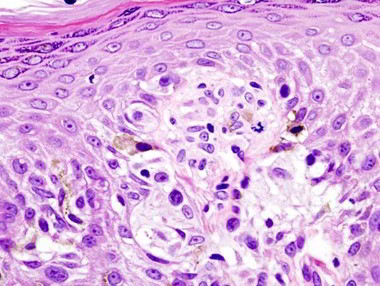Of all the kinds of skin cancer, malignant melanoma is the most serious. Malignant melanoma has become more common with our obsession with getting and keeping a suntan.
A melanoma may start as a fresh development on normal skin or may grow from an existing mole. Left untreated, the cancer can propagate quickly to other parts of the body and may be lethal. As with most other skin cancers, exposure to sunlight and the usage of sunbeds are risk factors, and fair skinned individuals are most at risk. Malignant melanoma is most common between the ages of 40 and 60, increasingly common in young adults and more common in girls.
Globally, the amount of instances of malignant melanoma, especially in young adults, has grown drastically over the previous 10 years. This rise is most likely because of the growing popularity of outdoor activities. On the other hand, the state is still most common in individuals aged 40-60. In the UK, there are about 4,000 new cases each year, out of a total of 40,000 new cases for all kinds of skin cancer.
Wearing a high sun protection factor sunblock and a hat helps reduce sun damage to the skin.
What Is The Cause?
Malignant melanoma is believed to result from damage to melanocytes (the skin cells that produce the pigment melanin) by sun.
The cancer occurs more often in people who have fair skin than in people that have dark skin.
Individuals who constantly expose themselves to extreme sun or who live in sunny climates are at greater risk of developing the cancer.
Serious sunburn in childhood was shown to double the likelihood of developing malignant melanoma in later life. Reducing exposure to sunlight can help reduce the risk of developing any kind of skin cancer.
What Are The Risks?
If found early, most cases of skin cancer can be treated successfully through operation, although some can prove critical.
Skin cancers have grown by 7 percent in fair skinned individuals world-wide over the last a decade. A man’s risk of developing skin cancer is raised by several variables, including:
- having fair skin
- having skin that’s an inclination towards freckling
- having many moles
- a family history of malignant melanoma
- having had one or more attacks of acute sunburn during childhood
- being aged over 30 years
- many years of exposure to strong sunshine.
What Are The Symptoms?
Malignant melanomas can grow on any part j of the body but appear most commonly on sun-exposed regions. Some melanomas spread across the skin in unusual level spots, others appear as fast growing lumps. In elderly individuals, they may happen on the face as freckle-like spots, known as lentigo maligna, that grow slowly over j many years. If they’re not removed, all of these kinds of melanoma will develop down into the underlying layers of the skin.
Self-Help
- You should scrutinize your skin frequently and notice the location and size of any moles. Get help from somebody else to examine your back and scalp. Changes in existing moles or the look of a new and enlarging spot should be reported to your physician when possible. A mole that’s more than 6mm (Kin) across or reveals variation in color or colour must be assessed by your physician promptly.
- If you’ve got a mole or freckle in a spot where there’s friction, for example under a bra strap, around the waist or on the side of the foot, have it excised instantly.
- Always wear sunblock on the face and backs of hands, a floppy hat and ultraviolet (UV) resistant garments in really glowing sunlight or where there’s lots of reflection, as on snow or water.
What Might Be Done?
If your physician suspects which you have a malignant melanoma, she or he will organize for a sample to be removed for microscopic evaluation (a biopsy). If the sample is found to be cancerous, a broader area of skin may subsequently be removed to reduce the risk of malignant cells staying. If a substantial piece of skin must be removed, you may need skin grafting.
Samples are often taken off the lymph nodes near the melanoma and examined for cancerous cells, the existence of which would suggest the cancer has spread. If the cancer has spread and other regions of the body are changed, you may have chemotherapy or radiotherapy.
What Is The Prognosis?
The prognosis depends upon where the melanoma is situated, how much the lesion has grown down into the skin and whether the cancer has spread to other places. People who have shallow melanomas who get early treatment are generally treated. If melanomas are especially aggressive or permeate deep into the skin, the prognosis is less positive. Melanomas that have spread to other parts of the body are generally deadly.
Warning:
You may have a malignant melanoma if a fast growing, unusual, dark-coloured spot grows on your own skin. If you find the subsequent changes in an existing mole, seek immediate medical advice:
- raising size
- unusual and asymmetrical edges
- itching, inflammation or redness
- thickening of the surface
- bleeding or crusting
- variation in colour or colour.


 (47 votes, average: 4.75 out of 5)
(47 votes, average: 4.75 out of 5)